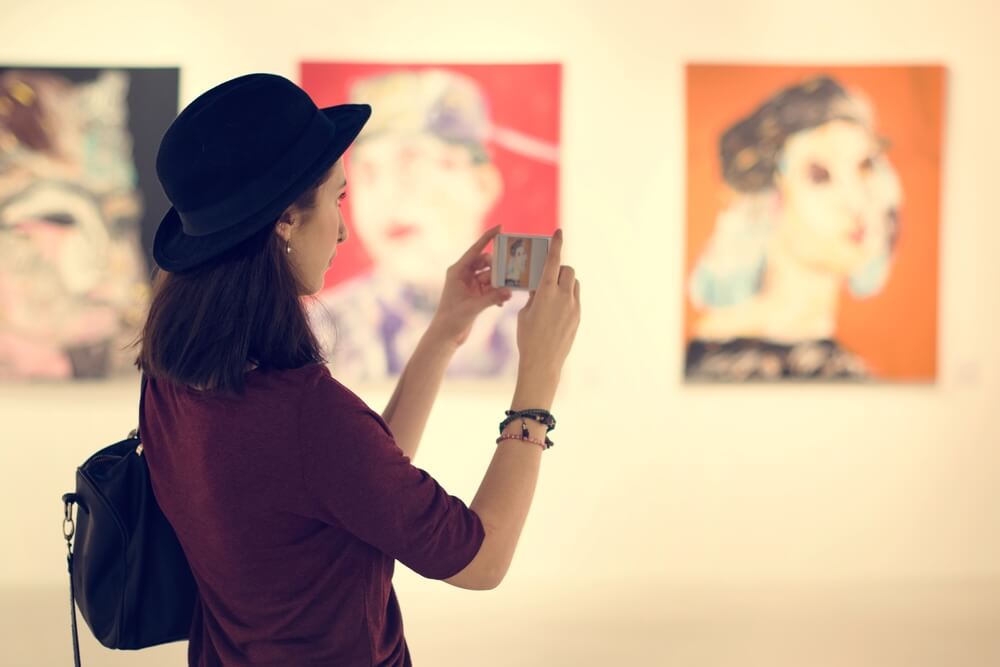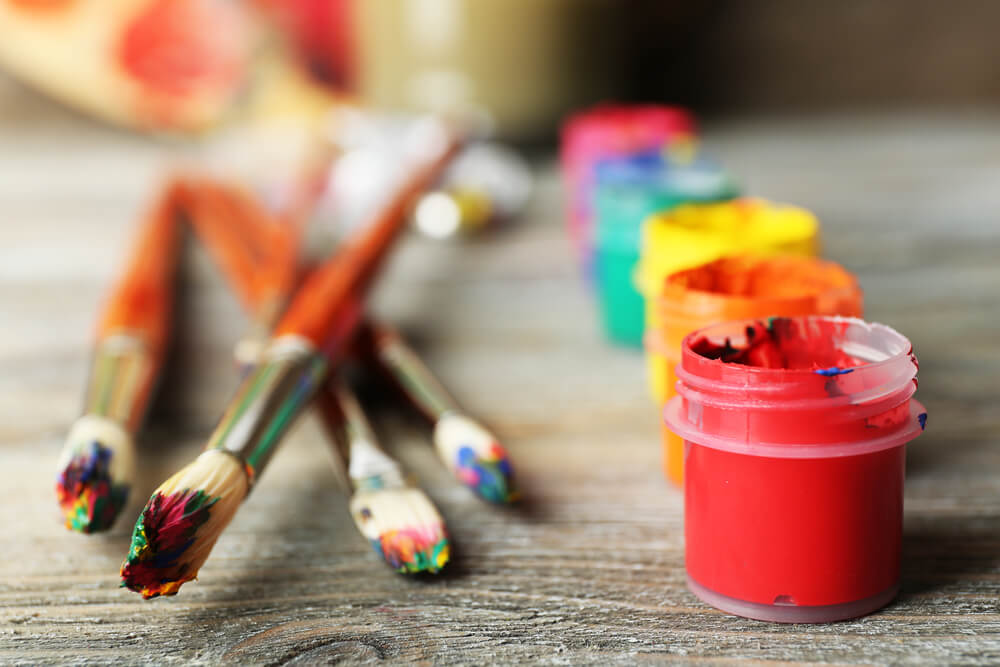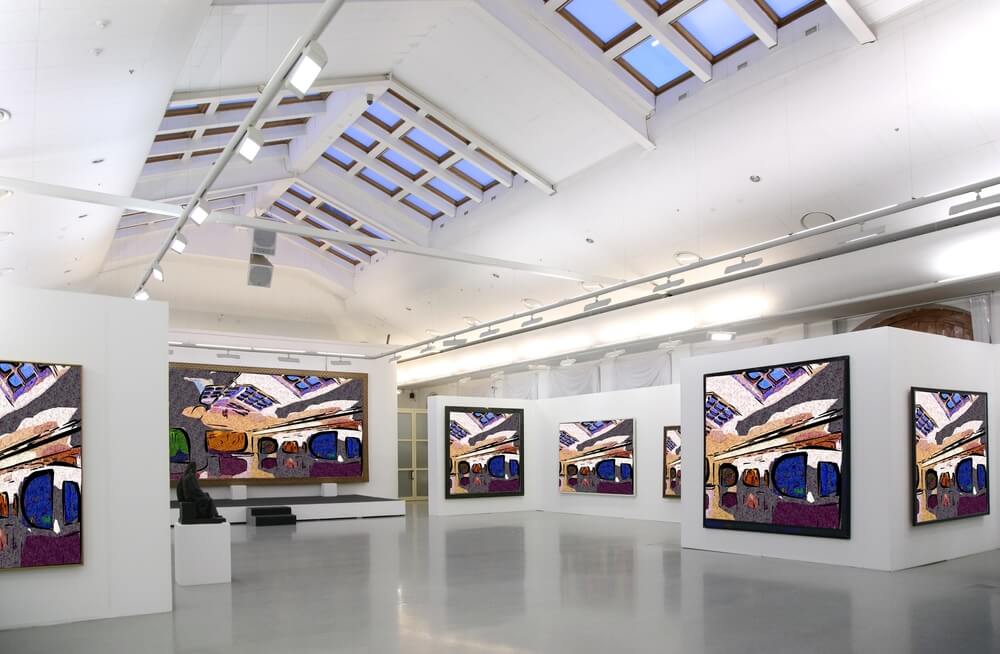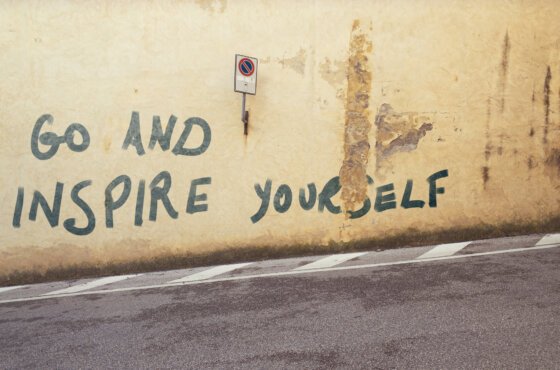How works of contemporary art are created and evaluated

Фото: Depositphotos
The historian and sociologist Alvaro Santana Acuna has published an essay on the portal La Vie des idées (Books & Ideas)in which he explained the pricing system in contemporary art. Pricing is a complex process involving a large number of intermediary participants, not only obvious, but also fundamentally new, often invisible.
Edition “Artguide”Published a translation of an essay by Akunya.
Economic and cultural sociology of the market for contemporary art.
The most sought-after artist of our time is a woman - 87-year-old Yayoi Kusame. In 2014, the total revenue from sales of her works at auction was $34,6 million. In 2015, the price of one of her paintings reached $7 million. The works of this artist are sold in the most prestigious galleries (Gagosian Gallery and Zwirner Gallery) and at auctions (Sotheby's and Christie's). Her famous pumpkin sculptures are bought for private collections for several tens of thousands of dollars. Pumpkins, decorated with patterns, have become an inspiration for creating a collection Louis Vuitton. However, being a millionaire, the artist chose to live in a psychiatric hospital, from where she goes only to work in her workshop.
The success of Kusama’s world shows that the emphasis has shifted from Western art, which has always been the center of attention since the Renaissance, to Asian art. Museums such as the Louvre in France or the Guggenheim Museum in the USA open their branches outside Western European countries, for example, in the United Arab Emirates. The boundaries between the galleries are increasingly blurred.
Prices for works of contemporary art and their formation
Formation of prices for works of contemporary art should be considered not only from an exclusively economic position, because we are talking about prices for objects that have aesthetic value. Roughly speaking, the price has a certain meaning. All markets (including the contemporary art market) work in the same way: they are controlled by prices that cannot exist separately from cultural reality. Pricing depends on the type of organization that sells the piece. Galleries and auction houses really use a different approach to pricing. If the former are engaged in the art trade, the latter sell goods. Gallery owners see their task in the promotion of modern art and consider their colleagues from auction houses "parasites". The galleries account for 56% of all trade in works of art.
Pricing cannot be set spontaneously. A larger product will cost more than a small work, and painting will be more expensive than a drawing and so on. However, the price of the work depends not only on its technical characteristics. To understand such non-technical aspects, it is necessary to analyze pricing, which in itself is an art. Art dealers rely on different pricing schemes that “work as cognitive guides to help you make a decision” to set the price for a work of art. Approaches to the pricing of different merchants are constantly being revised depending on the technical and - above all - non-technical characteristics of the work.
Today, artists, dealers and collectors are harder to determine the price of a work of art. Although the globalization of the market for contemporary art is not a new phenomenon, it is still a key factor explaining the uncertainty that has been established around pricing. For example fair India art fair it is clear that works by recognized Indian artists are better sold in the USA and the UK than in India.
Obvious pricing component
Prices for works of art behave in the same way as prices for gasoline: they depend on a number of cultural players and objects that constantly interact with each other in the market. The average consumer, as well as the collector, finds out the price of the goods only at the very end of the production chain, that is, when he refills the car. However, he does not see intermediaries and does not know anything about their role and the percentage of the final price that they get, because the production chain is not transparent. The invisible intermediaries discussed in this example are oil companies, refineries, local and international carriers and tax authorities.
You can investigate what pricing system owners of refills use. However, the analysis of the final stage of pricing will not be able to fully explain the pricing process, that is, to show everything that stands behind one liter of gasoline. Intermediaries use different systems, or scenarios, pricing, which lead to the imposition of different semantic and value levels in the formation of the final price. The economic and cultural approach to the sociology of the market for contemporary art works in a similar way. All studies, as a rule, are focused on the formation of prices for works of art at the stage of “refueling”, in other words, at the gallery level, where the average collector makes purchases. As in the case of gasoline, the pricing scheme used by the galleries remains for the consumer, that is, the collector (and the researcher), opaque. Only those researchers who use the ethnographic or qualitative approach can shed light on pricing schemes used by invisible intermediaries, as well as on how they influence the formation of the final price.

Фото: Depositphotos
The role that hidden intermediaries play in the pricing of works of art remains unclear due to the efforts of collectors, gallery owners and artists. This is especially true of artists who support the popular belief that they independently create works from beginning to end.
Since people want to believe that artists can create works without resorting to additional assistance, the latter seek to prove that they are fully responsible for the artistic side of things, rejecting the contribution to the work of their assistants.
In general, if we want to use a more global approach to the pricing issue in the contemporary art market, it is also necessary to keep in mind the hidden intermediaries: assistants, technical specialists, workshops (photo and design studios, engineering companies), art consultants, insurance companies, suppliers, online galleries and others.
In order to truly understand the pricing of works of contemporary art, it is first necessary to understand the different value levels and their influence on making decisions related to determining prices at different stages of creating a work of art, from idea and manufacturing to exposure and sale.
Hidden intermediaries in the market of contemporary art
Technical value. Modern art has become so complex from a technical point of view that the workshops of many professional artists, such as Jeff Koons, Damian Hurst, Ai Weiwei, Yayoi Kusama, Olafur Eliasson or Anish Kapoor, very rarely make their works on the spot from the beginning to the end. In recent years, the number of hidden players in the market and the diversity of their roles in the process of creating works of contemporary art have not ceased to grow. In general, the photographer’s team and its budget for shooting can compete with the film industry.
In addition, innovation influences contemporary art. In itself, innovation launches a new process in art, coupled with certain spending, which in turn is simply impossible to immediately identify. In order to achieve an innovative form that repeats the movement of fluid in his series “Water casts”, Matthew Barney had to do a lot of experiments with different materials, which took a lot of time and effort. Since innovation is based on the launch of various processes, the price of the most innovative works of art is increasing.
An innovative approach to art is becoming more expensive as recognized artists find themselves at a dead end and are forced to look for new ways of artistic expression.
The cost of innovation is one of the components in the formation of prices for their works. This premium corresponds to the innovation component in the work and must take into account the entire process of developing innovation, the research and tests associated with it, which are performed by market participants invisible to us. As a result, prices for works of contemporary art are constantly rising, since, among other factors, the production of works requires more and more time, especially at the stage of experiments. In addition, it requires the participation of highly qualified specialists. And finally, it is based on the involvement of subcontractors - in the sense that the work is performed not in the artist's studio, but in specialized workshops.
According to recent studies, invisible intermediaries are also under pressure, who also have to constantly evolve and resort to innovative approaches in order to attract customers (artists, traders and collectors).
The increasingly active participation of mediators in art at the global level only confirms the idea of the social construction of the aura. In the workshops, whether photo or design studios, foundries, work professionals who do not understand at all in modern art. For them, the work they are working on is devoid of any aura: they can touch it and play with it - in other words, do everything that is forbidden in galleries and museums.
However, the question arises about how the workshops, where the production is carried out, contribute to the creation of an aura of works of contemporary art. Does the aura affect pricing? Transformation of a material object into a work of art is a fundamental ritual stage in pricing, which is not limited solely to the interaction between artists, merchants and collectors. As soon as the work appears to the audience, it acquires the aura that the exhibition space creates around it. From this moment on, the aura, far from purely technical characteristics, establishes social relations, which are a new value level.
According to recent studies, the evaluation process of cultural objects is also connected with emotions. Moreover, it was found that emotions play a role in trading operations.
Art for the elect
The richest collectors, who make up the entire 1% of the total, buy works of art in galleries and fairs. They also participate in auctions, but very rarely appear there in person, even when it comes to the most prestigious galleries. They, as a rule, are represented by consultants - a new type of hidden intermediaries between a trader and a collector - that come into play at the stage of selling a piece. But most importantly, this 1% has its own market: the market for orders and private sales. This market segment works differently, here collectors may make illegal purchases, resorting to the mediation of foreign companies. Collectors are able to find fabulous sums to buy pictures of Jackson Pollock or Willem de Kooning bypassing galleries and auction houses. Collectors can make private orders, giving technical instructions regarding, for example, colors, shapes, coatings and other characteristics of future work. In this market segment, collectors are no longer interested in simply buying works of art - they want to participate in their creation.
Unfortunately, little is known about the order and private sales market and its pricing strategies, including because of its closeness and lack of transparency. Obviously, works of art that decorate homes, offices, yachts and collectors' planes are an investment. However, there is no data on the movement of funds in this closed market.
Some objects created by private order, are exhibited as public art in cities such as New York or London. For wealthy collectors, this is undoubtedly a way to reduce tax payments. Such works can travel the world as part of museum and gallery exhibitions, for which collectors often ask for a serious reward.
The works, worth many millions of dollars, pass from hand to hand without the mediation of merchants, and therefore imperceptibly to the tax authorities. According to the few data that we have, including the Panama Archive, the crisis has allowed 1% of the richest collectors to experience something like a “golden age” where private transactions are bypassed by galleries and auction houses.
Due to its opacity, this market, available only to 1% of collectors, is closed to researchers and journalists, but it is completely open to fraudsters. Thefts of the works of art displayed constantly appear in the center of scandals in the press.
In the market, affordable 1% richest collectors, traders have long ceased to be all-powerful players, which they were considered to be in the sociology of culture. The most famous art dealers, realizing all the danger posed by this market, existing in parallel with their activities, seek to expand their influence on the world stage of modern art, opening new branches of their galleries around the world.

Фото: Depositphotos
The rise of international galleries
Today, most financial transactions occurring on a daily basis are made in the largest capitals of world art, such as New York, London, Chicago and Hong Kong. Between the "global cities" established closer ties than at the local level. The same thing happens with the contemporary art market, where international galleries play a leading role: Gagosian Gallery (16 galleries around the world), Pace Gallery (10), Hauser & Wirth Gallery (6), Perrotin Gallery (6), Zwirner Gallery (4, plus international exhibitions), Marian Goodman Gallery (3), Blum & Poe Gallery (3) and Fergus McCaffrey Gallery (2, plus international exhibitions).
The largest contemporary artists trust them to sell their work: among them Takasi Murakami, Richard Serra, Yayoi Kusama, Matthew Barney, Urs Fisher, Sophie Kall, Damian Hurst, Gregory Creedson, Cindy Sherman, Andreas Gursky, Gerhard Richter, Jeff Coons, Paul McCarthy and Olafur Eliasson.
Today, these international galleries are changing the system of relations between the trader and collector that developed in the 19th century. Growing resources and administrative flexibility allow them to quickly respond to new trends and borrow works from museums and private collections. The exposition of the museum objects makes those artistic trends and the artists themselves, who go to promote the galleries, more authoritative and significant. Therefore, galleries have resorted to the expertise of famous art historians and museum staff to organize exhibitions in their own spaces. As galleries' resources increase, they are no longer satisfied with sales exclusively in the primary market - therefore, galleries start to behave very actively in the secondary market, which, as a rule, is the prerogative of auction houses.
Today, the competition between the largest dealers in the market of works of contemporary art is not at the local, but international level. To take a prominent place in this market, young gallery owners decide to abandon the use of permanent spaces. Vito Schnabel, who organized the wandering exhibitions for many years, opened a gallery in St. Moritz (Switzerland), an unusual place for the gallery business. Andy Valmorbid and Vladimir Restaun Roitfeld also dispense with the traditional gallery space - they rent rooms all over the world for the exposition of those works that they decide to sell. Moreover, some hotels position themselves as exhibition spaces - an alternative to galleries. And others (for example, Le Royal Monceau in Paris, Savoy Hotel in London, a hotel chain 21c Museum in the US or Langham hotels worldwide) offer services that allow you to transform their lobbies or rooms into exhibition spaces in the manner of galleries or museums.
The most unpleasant surprise that galleries may encounter is the decision of the largest contemporary artists to open their own exhibition spaces, where they will exhibit their works and their own private collections. Damien Hirst already laid the foundation for this process: in 2015, he opened a gallery Newport street gallery (also called the Damian Hurst Gallery) in Lambert, a rapidly developing area of London.
In general, the development of galleries in terms of expanding space shows that the world is undergoing the most profound changes.
Large museums have become not only independent places of pilgrimage for tourists, but also have been affected by the globalization of the art market. During the XIX – XX centuries, museums were part of the “imaginary community” of nations. But at the beginning of the 21st century they helped to realize that there are national and international projects. The largest museums show works from their collections in spaces belonging to galleries with branches throughout the world, as well as participate in the inter-museum exchange of international scale. In some cases, museums are even ready to move their collections: for example, the Louvre opens the satellite museum in Abu Dhabi.
Finally, increasingly blurring the boundaries between galleries and museums provoked the emergence of a phenomenon that was unthinkable a few decades ago - talking about pantuflyazh, that is, the transition of civil servants to the private sector. Directors and custodians who hold key positions in museums leave them to go to work in the largest galleries and auction houses. Conversely, merchants are reborn, becoming part of the museum teams. So, the former gallery owner Jeffrey Deich of the order of 3 years was the director of MOCA. And Paul Schimmel, dismissed by Deutsche, the main curator, instead of going to another museum, decided to join the gallery world: now he is the director and vice president of a huge gallery. Hauser Wirth & Schimmel In Los Angeles. Mark Rosenthal left the post of curator at the National Gallery of Art, Washington, to work as an independent consultant with various museums and galleries. Alfred Pakeman, former director of the Pompidou Center in Paris, organized the exhibition of Simon Antai (Pliage: The First Decade, 2015) for gallery Mnuchin in the Upper East Side - the fashionable district of New York.
Read also on ForumDaily:
Xnumx best places to live in florida
Life in New York: visit the set, light up in the film and have a drink with the actors
Subscribe to ForumDaily on Google NewsDo you want more important and interesting news about life in the USA and immigration to America? — support us donate! Also subscribe to our page Facebook. Select the “Priority in display” option and read us first. Also, don't forget to subscribe to our РєР ° РЅР ° Р »РІ Telegram and Instagram- there is a lot of interesting things there. And join thousands of readers ForumDaily New York — there you will find a lot of interesting and positive information about life in the metropolis.











